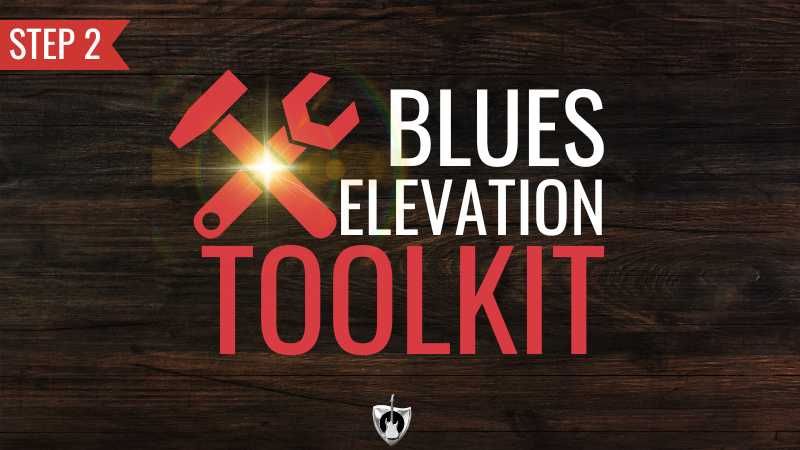Issues With Different Electric Guitars - 310
Today, I'll help you learn a little about the idiosyncracies of different guitars, ahead of time. Not all guitars are for everyone. This will save you a lot of time and money in the long run.
▶▶ FREE WORKSHEET - Learn the 4 scale patterns that are in all your favorite songs - across the fretboard!
https://www.playguitaracademy.com/big_four_scale_worksheet
Not all guitars are created equal, and choosing the right guitar can save you a lot of time and money in the long run. Each guitar has its own unique characteristics, and understanding these quirks can make all the difference in your playing.
Whether you're a beginner or a seasoned pro, it's important to know what to expect when you try out a new guitar.
Let's start with the trinity of electric guitars: Strats, Teles, and Les Pauls. These classic guitars have been around for decades and are still popular among guitar players today. But each guitar has its own unique set of issues that you need to address before you can start rocking out.
Fender Stratocaster
1. Bridge Pickup
When it comes to the Stratocaster, one of the most common issues that players face is the bridge pickup. While it can provide that classic, bright sound that Stratocasters are known for, it can also be prone to some problems.
One issue is finding the right amp tone setup between the neck and bridge sounds. Many players find that they have to adjust their amp settings when switching between the two pickups to get the desired sound.
Additionally, some players may find that the bridge pickup can sound too trebly or harsh, especially when playing at high volumes. It may take some experimentation with tone settings and pickup height to find the sweet spot for your playing style.
Another issue to keep in mind is that the bridge pickup can be more sensitive to string noise and picking dynamics, so it may require some extra attention to get a clean sound.
2. Tremolo
Moving on to the tremolo, this feature can be both a blessing and a curse for Stratocaster players. On one hand, it can provide some great vibrato effects and add expression to your playing.
On the other hand, it can be notorious for going out of tune, especially if you use it frequently. It's important to note that the tremolo is connected to the bridge, so any changes to the bridge setup can affect the tremolo's stability.
To keep the tremolo in tune, you may need to adjust the spring tension, lubricate the contact points, or even upgrade to a higher-quality tremolo system.
Additionally, when bending strings with the tremolo engaged, you may find that the bridge moves and throws your tuning off. To prevent this, you can try using a lighter touch or adding more springs to the bridge to increase stability.
3. Volume Knob
Finally, let's talk about the volume knob on a Stratocaster. This seemingly simple feature can actually cause some frustration for players.
One common issue is that the volume knob can be in the wrong place for some players' playing styles. If you're used to strumming aggressively or using a lot of palm muting, you may find that the volume knob gets in the way or accidentally gets turned down.
Another issue is that the volume knob can sound dull when turned down, especially on older guitars. This is because the tone control is also affected when the volume is turned down. To combat this, some players opt for a treble bleed circuit, which maintains the high-end frequencies even when the volume is rolled back.
Overall, the volume knob is an important part of a Stratocaster's functionality, but it may take some tweaking to get it just right for your playing style.
Fender Telecaster
1. Belly Cut:
The belly cut is a design feature found on most Telecaster guitars. This is a rounded edge that is carved out of the body of the guitar, typically on the back.
The purpose of the belly cut is to make the guitar more comfortable to play, especially for players who prefer to play with the guitar resting on their leg. Without the belly cut, the sharp edges of the guitar body can dig into the player's leg, causing discomfort and even pain over time.
The belly cut makes the guitar much more comfortable to hold for extended periods of time, which is essential for players who practice for long hours or perform live shows.
2. Bridge Pickup:
The bridge pickup on a Telecaster guitar is known for its distinctive sound, which is often described as bright, clear, and twangy. This pickup is typically made with a single coil, which gives it a unique sound compared to other guitars with humbucker pickups.
The bridge pickup is positioned close to the bridge of the guitar, which gives it a brighter sound than pickups positioned closer to the neck. This pickup is ideal for playing country, blues, and rock music, as it can cut through the mix and stand out in a band setting.
3. Scale Length:
The scale length of a guitar refers to the distance between the nut and the bridge of the guitar. For Telecaster guitars, the scale length is typically around 25.5 inches, which is longer than the scale length of many other guitars.
The longer scale length gives the guitar a brighter tone and better sustain, as the strings have more tension and are stretched over a longer distance. However, this can also make the guitar more difficult to play, especially for players with smaller hands or those who are used to playing guitars with shorter scale lengths.
It's important to consider the scale length when choosing a guitar, as it can have a significant impact on the sound and playability of the instrument.
Gibson Les Paul
1. Tuning stability:
Les Pauls are notorious for having tuning stability issues, especially with the G string. This is due to the headstock design, which results in a more acute break angle at the nut.
This angle puts more pressure on the string, causing it to bind and slip out of tune easily. However, there are some ways to mitigate this issue.
One solution is to lubricate the nut slots with graphite or a specialized lubricant. Another solution is to use locking tuners, which provide better tuning stability and eliminate the need for multiple wraps around the tuning peg.
2. Weaker headstocks:
Another issue with Les Pauls is the tendency for the headstock to break or snap off. This is due to the angle of the headstock and the weight of the guitar.
The angle puts more stress on the joint between the headstock and the neck, while the weight of the guitar puts additional strain on that joint. There are a few ways to prevent this from happening, including using a headstock support device when changing strings, and being careful not to knock the guitar over or drop it.
3. Carved top:
Les Pauls are known for their beautiful carved tops, which give them a distinct look and feel. However, this carved top can also present some issues for players.
One issue is the angle of the playing arm, which can be uncomfortable for some players. Another issue is the weight of the guitar, which can cause shoulder and back pain over long playing sessions.
To mitigate these issues, some players use a strap with a wider and more padded shoulder pad, or use a different playing position that puts less strain on the shoulder and back muscles.
Conclusion
In conclusion, understanding the idiosyncrasies of different guitars is essential to becoming a better player. Whether you prefer Strats, Teles, Les Pauls, or any other type of guitar, knowing what to expect will help you get the best tone and play with confidence.
So next time you try out a new guitar, remember to keep these tips in mind and get ready to rock!
SHOW NOTES FOR THIS EPISODE-
https://www.playguitaracademy.com/blog/issues-with-different-electric-guitars-310
PLAY GUITAR ACADEMY - Instant access to all of Lee's premium courses, Group classes, and "Part 2" videos -
https://www.playguitaracademy.com
COACHING CLUB -
https://www.playguitaracademy.com/play-guitar-coaching
PLAY GUITAR PODCAST -
https://podcasts.apple.com/us/podcast/play-guitar-podcast/id1341900209
https://open.spotify.com/show/0MxjU2Y0L8PoYiTKmCtvpt
YouTube - Play Guitar Academy (SUBSCRIBE)-
https://www.youtube.com/@playguitaracademy
FACEBOOK -
https://www.facebook.com/PlayGuitarPodcast/
https://www.facebook.com/groups/playguitargroup/
INSTAGRAM -
https://www.instagram.com/playguitarpodcast
PODCAST PLAYLIST -
https://www.youtube.com/playlist?list=PL3WNVOl-akd36v5CUQjDba9dh6VD7HWo
Copyright ©2023 Play Guitar Academy
GET FREE WEEKLY GUITAR LESSONS, PODCASTS, AND MOTIVATION DELIVERED TO YOUR INBOX.
Your information is kept safe. It's never shared with third parties.




